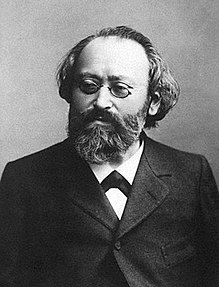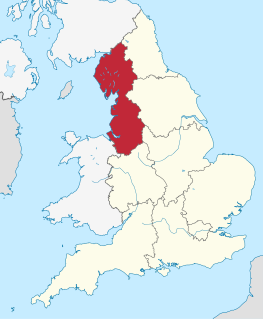An American in Paris is a jazz-influenced orchestral piece by American composer George Gershwin first performed in 1928. It was inspired by the time that Gershwin had spent in Paris and evokes the sights and energy of the French capital in the 1920s.

The euphonium is a medium-sized, conical-bore, tenor-voiced brass instrument that derives its name from the Ancient Greek word εὔφωνος euphōnos, meaning "well-sounding" or "sweet-voiced". The euphonium is a valved instrument. Nearly all current models have piston valves, though some models with rotary valves do exist.

The French horn is a brass instrument made of tubing wrapped into a coil with a flared bell. The double horn in F/B♭ is the horn most often used by players in professional orchestras and bands. A musician who plays a French horn is known as a horn player or hornist.

An orchestra is a large instrumental ensemble typical of classical music, which combines instruments from different families, including bowed string instruments such as the violin, viola, cello, and double bass, brass instruments such as the horn, trumpet, trombone and tuba, woodwinds such as the flute, oboe, clarinet and bassoon, and percussion instruments such as the timpani, bass drum, triangle, snare drum, cymbals, and mallet percussion instruments each grouped in sections. Other instruments such as the piano and celesta may sometimes appear in a fifth keyboard section or may stand alone, as may the concert harp and, for performances of some modern compositions, electronic instruments.

The tuba (bass) is the largest and lowest-pitched musical instrument in the brass family. As with all brass instruments, the sound is produced by lip vibration into a large mouthpiece. It first appeared in the mid-19th century, making it one of the newer instruments in the modern orchestra and concert band. The tuba largely replaced the ophicleide. Tuba is Latin for 'trumpet'.

Orchestration is the study or practice of writing music for an orchestra or of adapting music composed for another medium for an orchestra. Also called "instrumentation", orchestration is the assignment of different instruments to play the different parts of a musical work. For example, a work for solo piano could be adapted and orchestrated so that an orchestra could perform the piece, or a concert band piece could be orchestrated for a symphony orchestra.

Rhapsody in Blue is a 1924 musical composition by the American composer George Gershwin for solo piano and jazz band, which combines elements of classical music with jazz-influenced effects.

Max Bruch was a German Romantic composer, teacher, and conductor who wrote over 200 works, including three violin concertos, the first of which has become a staple of the violin repertory.

A concert band, also called wind ensemble, symphonic band, wind symphony, wind orchestra, wind band, symphonic winds, symphony band, or symphonic wind ensemble, is a performing ensemble consisting of members of the woodwind, brass, and percussion families of instruments, and occasionally including the double bass or bass guitar. On rare occasions, additional non-traditional instruments may be added to such ensembles such as piano, harp, synthesizer, or electric guitar.

Allan Gilliland is a contemporary Canadian composer.

Classical music is art music produced or rooted in the traditions of Western culture, including both liturgical (religious) and secular music. While a more precise term is also used to refer to the period from 1750 to 1820, this article is about the broad span of time from before the 6th century AD to the present day, which includes the Classical period and various other periods. The central norms of this tradition became codified between 1550 and 1900, which is known as the common-practice period.
The Concerto for Piano and Wind Instruments was written by Igor Stravinsky in Paris in 1923–24. This work was revised in 1950.
Grand traité d’instrumentation et d’orchestration modernes, abbreviated in English as the Treatise on Instrumentation is a technical study of Western musical instruments written by Hector Berlioz. It was first published in 1844 after being serialised in many parts prior to this date and had a chapter added by Berlioz on conducting in 1855.

The euphonium repertoire consists of solo literature and parts in band or, less commonly, orchestral music written for the euphonium. Since its invention in 1843, the euphonium has always had an important role in ensembles, but solo literature was slow to appear, consisting of only a handful of lighter solos until the 1960s. Since then, however, the breadth and depth of the solo euphonium repertoire has increased dramatically.

The Flood: A musical play (1962) is a short biblical drama by Igor Stravinsky on the allegory of Noah, originally written as a work for television. It contains singing, spoken dialogue, and ballet sequences. It is in Stravinsky's late, serial style.
The accordion is in a wide variety of musical genres, mainly in traditional and popular music. In some regions, such as Europe and North-America it has become mainly restricted to traditional, folk and ethnic music. In other regions such as Mexico, the instrument is very popular in genres like Norteño, and in Brazil, it is a fixture in popular music styles as Sertanejo and Forró. In art music it is used in jazz music, an important exponent having been the North American accordionist Frank Marocco and in transcriptions from the operatic and light-classical music repertoire.
The Norfolk Rhapsodies are three orchestral rhapsodies by Ralph Vaughan Williams, drafted in 1905–06. They were based on folk songs Vaughan Williams had collected in the English county of Norfolk, in particular the fishing port of King's Lynn in January 1905. Only the first rhapsody survives in its entirety, having been revised by the composer in 1914. The second exists in fragmentary form, and has been completed by other hands. The third is lost.
Insomnia is a single-movement orchestral composition by the Finnish composer Esa-Pekka Salonen. The work was composed between March and November 2002 and was first performed on December 1, 2002 by the NHK Symphony Orchestra under Salonen.














